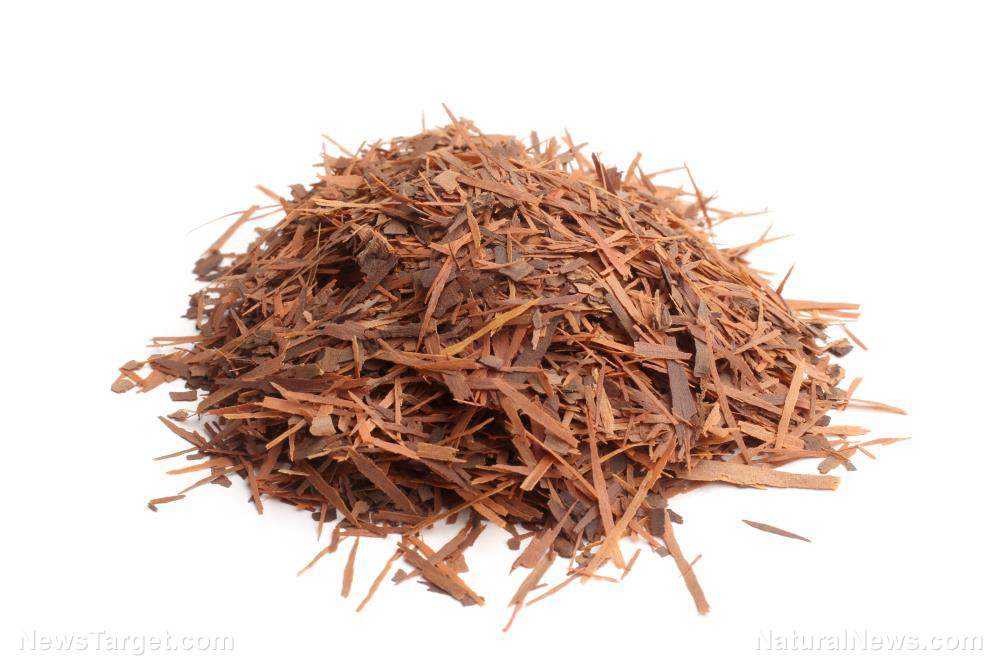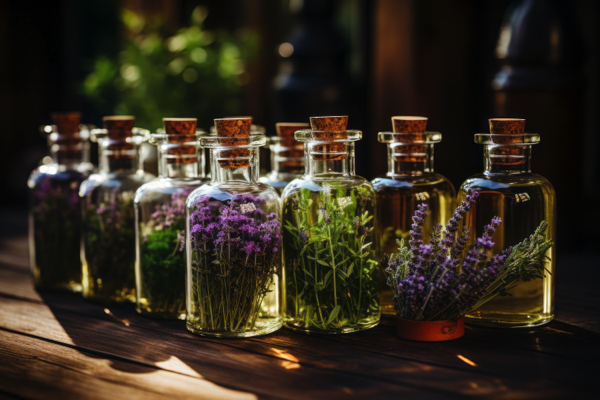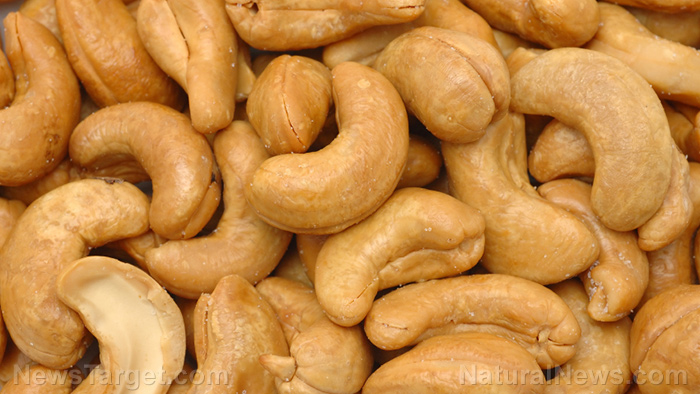Fight back against CANDIDA OVERGROWTH by deploying these phytochemicals and making healthy lifestyle changes
By ljdevon // 2025-04-07
Tweet
Share
Copy

- Modern diets and lifestyles are creating the perfect storm for Candida overgrowth, leading to a range of health issues.
- Experts recommend a holistic approach, including dietary changes and natural supplements, to combat this pervasive fungal threat.
- Six sources of herbal antifungal phytochemicals are identified to help restore gut health and fight Candida.
The modern diet: a breeding ground for candida
In an era where processed foods and sedentary lifestyles dominate, the human body is facing a silent but significant threat: Candida overgrowth. This opportunistic fungus, naturally present in the human gut, can wreak havoc when it proliferates unchecked. According to experts, the key to combating this fungal menace lies in a comprehensive approach that includes dietary adjustments, natural supplements, and lifestyle changes. The Standard American Diet (SAD) is a primary culprit in the rise of Candida overgrowth. High in processed fats, added sugars, and low in fiber, this diet creates an inflammatory environment that disrupts the gut microbiome. "Many factors can lead to an unhealthy gut," says Amy Bragagnini, a registered dietitian. "A Western diet that is low in fiber and high in processed fats and added sugar is a major factor, as it causes inflammation over time and reduces healthy gut bacteria, making it easier for Candida to grow." The processing of Western foods, which often involves adding preservatives, heating, and hulling, further exacerbates the problem. While these processes help reduce spoilage and harmful bacteria, they also strip away beneficial bacteria essential for controlling Candida levels. "If the gut is unhealthy, Candida can overgrow and contribute to a weakened immune response," explains Mpho Tshukudu, a functional nutritionist.Strategies to combat candida overgrowth
To effectively reduce fungal load, it's crucial to avoid the pitfalls that disrupt gut health and implement targeted strategies to restore balance. A diet rich in micro nutrients, prebiotics, probiotics, fermented vegetables, omega-3 fatty acids, and fiber can help reduce fungal species in the gut. "Balance is the key to a healthy microbiome, which is crucial for controlling overgrowths like Candida," emphasizes Bragagnini. Certain foods and supplements have been shown to combat fungal overgrowth effectively. For example, polyunsaturated fatty acids, found in fatty fish, walnuts, chia, and flax seeds, are known to help fight Candida yeast. Freshly crushed garlic, with its potent antifungal properties, can slow fungal growth by inhibiting an important enzyme and creating small pits on the outer surface of Candida. Garlic also prevents Candida from transforming into its more harmful form and reduces the expression of the gene SIR2 involved in this process.Six sources of antifungal phytochemicals
Oregano Oil
Oregano oil contains high concentrations of phenols, such as carvacrol and thymol, which disrupt the cell membranes of fungi, leading to their destruction. These phenols also inhibit the production of fungal enzymes, preventing Candida from reproducing and spreading. Additionally, oregano oil's broad-spectrum antimicrobial properties help to balance the gut microbiome, reducing the overgrowth of harmful microorganisms.Olive Leaf Extract
Olive leaf extract is rich in oleuropein, a compound that interferes with the fungal cell wall, making it difficult for Candida to survive and multiply. Oleuropein also boosts the immune system, enhancing the body's natural defenses against fungal infections. The extract's ability to inhibit biofilm formation further prevents Candida from establishing a stronghold in the gut.Pau d'Arco
Pau d'Arco contains lapachol, a powerful antifungal compound that damages the cell walls of Candida, leading to their death. This compound also disrupts the metabolic processes of fungi, inhibiting their growth and reproduction. Pau d'Arco's broad-spectrum activity helps to create an environment in the gut that is less favorable for Candida overgrowth.Black Walnut
The hulls of black walnuts are rich in juglone, a compound that has strong anti-fungal properties and can effectively kill Candida by disrupting its cellular functions. Juglone also has anti-parasitic effects, which can help to eliminate other gut pathogens that might contribute to an imbalanced microbiome. By reducing the overall pathogen load, black walnut supports a healthier gut environment.Neem
Neem leaves and extracts contain azadirachtin and nimbin, compounds that have potent antifungal properties and can inhibit the growth of Candida by interfering with its cell membrane integrity. Neem also has anti-inflammatory effects, which can help to soothe the gut lining and reduce the symptoms associated with Candida overgrowth. The broad-spectrum antimicrobial activity of neem helps to maintain a balanced gut microbiome, further supporting overall gut health.Clove Oil
Clove oil is rich in eugenol, a compound that has strong anti-fungal properties and can effectively inhibit the growth of Candida by disrupting its cell membranes. Eugenol also has anti-inflammatory and analgesic properties, which can help to alleviate the discomfort and inflammation associated with Candida overgrowth. The broad-spectrum antimicrobial activity of clove oil helps to create a hostile environment for Candida, promoting a healthier gut microbiome.An anticandida diet: a holistic approach
An anti-Candida diet focuses on reducing the growth of Candida yeast by limiting carbohydrate and added sugar intake, avoiding yeast-containing foods, and incorporating antifungal foods and supplements. This diet also emphasizes staying hydrated and including cruciferous vegetables and black and blue foods to support detoxification.Tshukudu provides a sample anti-fungal meal plan that includes:
Upon Waking: Herbal tea or water, such as mint, ginger, cinnamon, or clove tea. Breakfast: Scrambled or poached eggs with sautéed spinach cooked in coconut oil or extra-virgin olive oil, and a slice of seed crackers or seed bread. Enjoy herbal tea like ginger and turmeric or mint. Mid-morning Snack: Seed granola with plain yogurt and an herbal tea like rooibos flavored with cinnamon. Lunch: Grilled chicken with roasted broccoli and cauliflower, drizzled with apple cider vinegar, extra-virgin olive oil, and garlic-herb dressing. Drink water infused with fresh mint and cucumber. Afternoon Snack: Chia pudding made with coconut milk or cream, cacao powder or nibs, cinnamon, aniseed, and vanilla. Dinner: Steak with sautéed baby marrow, peppers, and onions. End the day with chamomile tea. *Also include anti-fungal phytochemicals, as listed above. These natural substances can be purchased and stored in your personal home apothecary, where they can be of use in acute, maintenance, and chronic situations of fungal infections requiring attention. As the modern world continues to grapple with the consequences of poor dietary choices and lifestyle habits, the fight against Candida overgrowth is more critical than ever. By incorporating antifungal foods and supplements into our diets, we can empower our bodies to heal and maintain a balanced gut microbiome. Sources include: TheEpochTimes.com Pubmed.gov ScienceDirect.com Pubmed.govTweet
Share
Copy
Tagged Under:
natural medicine alternative medicine holistic health natural remedies pau d'arco natural health lifestyle changes natural cures antifungal oregano oil food science Clove Oil phytonutrients naturopathy remedies infections candida herbal supplements cruciferous vegetables Black walnut goodhealth goodmedicine goodfood neem health science fungal overgrowth antifungal diet antifungal foods
You Might Also Like
Why essential oils are must-have barter items when SHTF
By HRS Editors // Share
Cashews: From tropical delicacy to modern superfood
By Ava Grace // Share
Heather Boon and Michael Smith examine the science and practice of 50 common medicinal herbs
By Kevin Hughes // Share
RFK Jr. lays down bold plan for HHS, slashing bureaucracy and tackling chronic disease
By Ava Grace // Share
Recent News
Why essential oils are must-have barter items when SHTF
By hrseditor // Share
Tulsi Gabbard takes aim at censorship: Justice for the 'Disinformation Dozen'
By newseditors // Share
Trump’s new 50% tariff threat to China rattles markets as allies scramble for deals
By isabelle // Share









